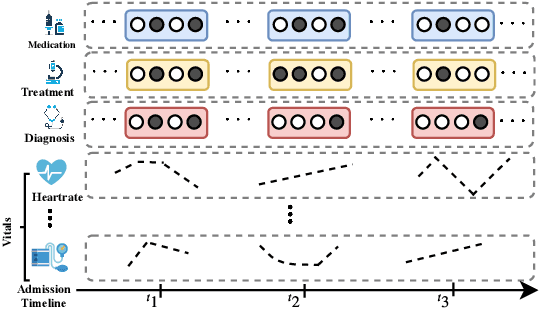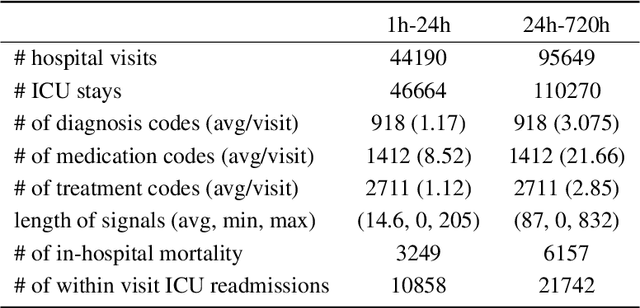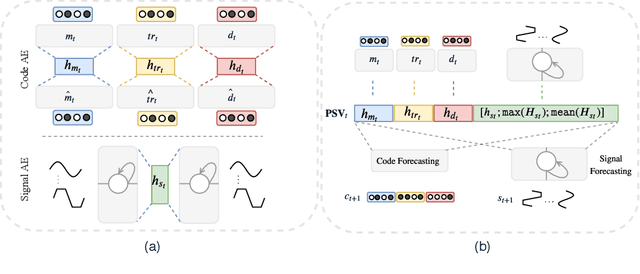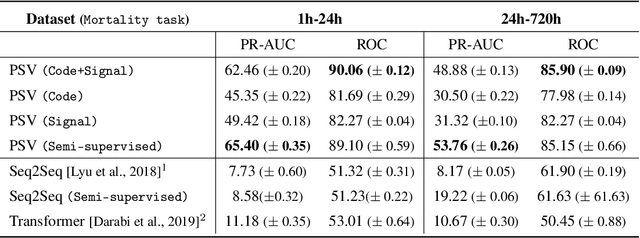Unsupervised Representation for EHR Signals and Codes as Patient Status Vector
Paper and Code
Oct 04, 2019



Effective modeling of electronic health records presents many challenges as they contain large amounts of irregularity most of which are due to the varying procedures and diagnosis a patient may have. Despite the recent progress in machine learning, unsupervised learning remains largely at open, especially in the healthcare domain. In this work, we present a two-step unsupervised representation learning scheme to summarize the multi-modal clinical time series consisting of signals and medical codes into a patient status vector. First, an auto-encoder step is used to reduce sparse medical codes and clinical time series into a distributed representation. Subsequently, the concatenation of the distributed representations is further fine-tuned using a forecasting task. We evaluate the usefulness of the representation on two downstream tasks: mortality and readmission. Our proposed method shows improved generalization performance for both short duration ICU visits and long duration ICU visits.
 Add to Chrome
Add to Chrome Add to Firefox
Add to Firefox Add to Edge
Add to Edge